Contact
|
Los Alamos Science Archive
Issue: 1-5 | 6-10 | 11-15 | 16-20
| 21-25 | 26-30
<< Previous Page | Next Page >>
| The Laboratory's 50th Anniversary |
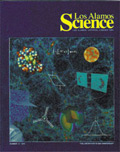 |
In 1993, LANL's 50th anniversary, the Cold War was over, and the Laboratory was in the midst of changing its identity. This volume captures the mood of the times through a candid roundtable among LANL scientists and former Director Harold Agnew. Hans Bethe and Edward Teller offer separate visions of the Laboratory's future, and feature stories examine the new "stewardship" of the nuclear weapons stockpile in the absence of nuclear testing, the threat of nuclear proliferation, and the new peacetime collaborations between former rivals in Russian and American nuclear weapons laboratories. Ten short articles show the breadth of research at LANL ranging from studies of nature's fundamental forces to superconducting wires for efficient delivery of electric power. This volume illustrates the evolving role of national laboratories in national security, energy security, and big science.
Go to Table of Contents |
| High Performance Computing |
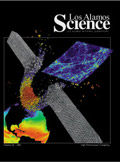 |
LANL has been at the forefront of scientific computing since before the invention of electronic computers. For several decades it collaborated with industry on the development of large-scale computers and in the early 1990's helped initiate the shift to massively parallel computing. LANL also pioneered the development of powerful algorithms for computations and simulations in the physical sciences. Beginning with a tutorial explaining how computers work, this volume covers some of LANL's best known software contributions, including a Monte Carlo code for particle transport, molecular dynamics software for materials science, and advanced tree codes for simulating the evolution of the universe. Finally, Paul Ginsparg, the creator of xxx.lanl.gov, discusses the motivation for the first electronic research archive.
Go to Table of Contents |
| Radiation Protection and the Human Radiation Experiments |
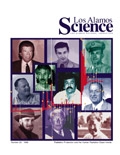 |
Many people have a great fear of radiation with very little understanding about what it is and how its effects vary with dose. Research on the health effects of radiation has been a priority at Los Alamos from the Manhattan Project to the present. The first section of this volume introduces the average reader to radiation and its properties, radiation and its relationship to cancer, and the epidemiology of radiation exposure. The second section relates the experiences of LANL plutonium workers who had accidental intakes of this reactor-produced element and highlights the ongoing efforts at LANL to understand and mitigate the effects of exposure. Finally, the last section sets the record straight on the 1944 government-run experiments, publicized during the 1993 DOE openness initiative, which involved plutonium uptake by human subjects. This volume lays out the Laboratory's involvement in those experiments, why they were done, what was learned, and what happened to the subjects.
Go to Table of Contents |
Russian American Collaborations to Reduce the
Nuclear Danger |
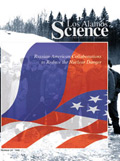 |
Since the end of the Cold War, Russian and American nuclear weapons scientists have been collaborating on both peaceful science projects and the sensitive problem of nuclear materials control. This volume tells the story of that collaboration, tracing its roots to pulsed-power experiments in the 1960s and the joint Russian-American nuclear tests of 1988 to verify compliance with the Threshold Test Ban Treaty. An outgrowth of this scientific collaboration was the development of a "sister-city" relationship between Los Alamos and Sarov (Arzamas-16), the Russian counterpart to Los Alamos.
Go to Table of Contents |
| Celebrating the Neutrino |
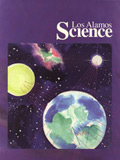 |
Starting with the Nobel-prize winning discovery of the neutrino in 1956 by Fred Reines and Clyde Cowan, Jr., LANL has made numerous contributions to neutrino physics and astrophysics. This volume puts these contributions in perspective while exploring the relationship between neutrino oscillation and non-zero neutrino masses. Articles on the Los Alamos LSND neutrino oscillation experiment, the search for the missing solar neutrinos at SNO, neutrinos in supernovae, and massive neutrinos in dark matter highlight the central role of the neutrino in frontier physics.
Go to Table of Contents |
<< Previous Page | Next Page >>
Issue: 1-5 | 6-10 | 11-15 | 16-20
| 21-25 | 26-30
|
Latest Issue
Recent Issues
|
